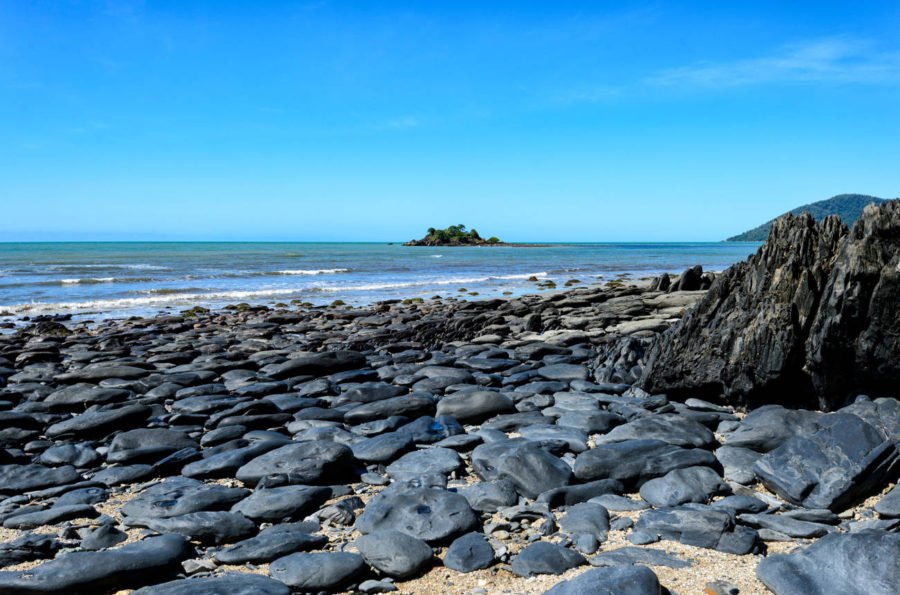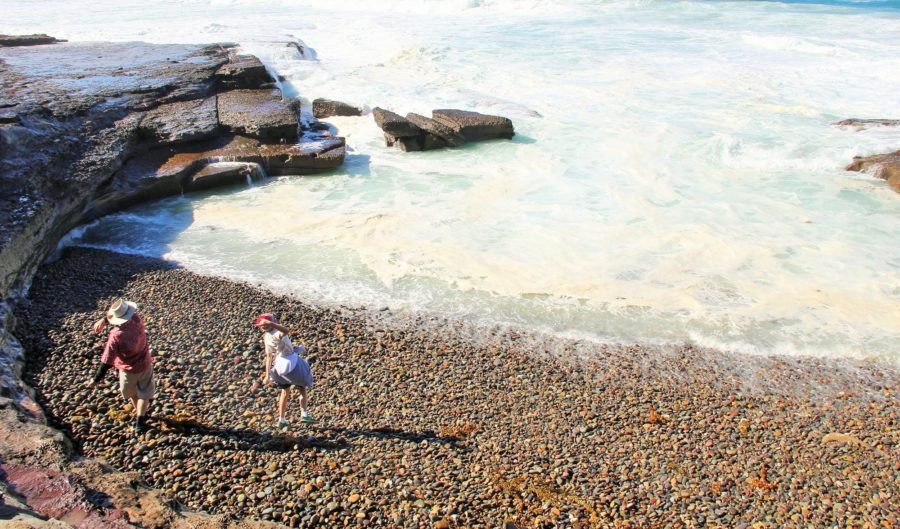The bouncing stones of Thornton Beach

Stones don’t bounce like tennis balls, do they? Try telling that to Colin Smeal of the ACT who could hardly believe his eyes while visiting Thornton Beach in far north Queensland.
“Instead of bouncing with ever-decreasing height when thrown in the air, these stones miraculously bounced in varying ways, with subsequent bounces sometimes higher or longer than the first bounce – impossibly defying the physical laws of gravity,” Colin says.
He isn’t the only baffled beachcomber to have experienced the geological phenomenon. Ever since the so-called bouncing stones featured in a Leyland Brothers television program episode in the 1970s, visitors have been drawn to the far-flung beach by the stones’ ‘magical’ qualities.
A tell-all paper submitted by three geologists to the Geological Society of Australia, Queensland division, in 1984, said the stones were actually “pebbles of a storm deposit derived from hardened siliceous siltstones”.
Apparently, the best bouncing pebbles are spherical and fine-grained, without marked bedding. “The most effective rebound is obtained by throwing a spherical pebble so that it strikes perpendicularly a plane surface of similar fine-grained rock (warning: this can be quite dangerous),” the rock doctors explained. “Allowing a pebble to fall under gravity onto a rock surface produces a much less effective ‘bounce’.”
Concerned that the stones could be depleted, the trio warned “… that the stones only bounce well on the beach should be explained to visitors so that casual souveniring is minimised.”
The stones are, thankfully, still in abundance. A number of tourists who pilfered rocks claim to have been ‘cursed’, in a way similar to those who have stolen rocks from Uluru. Some of the Uluru stones have been returned via post, along with notes of apology to the local Anangu people to whom the site is sacred.
What about bouncing fish? Readers may recall this column’s exposé on fish falls. Some remain sceptical about this natural phenomenon, but not Angela Jackson of Hove, South Australia. In October 1983, at a mining camp at Kuridala, near Cloncurry in north-western Queensland, Angela witnessed the strange spectacle firsthand as a storm front swept across the desert.
“At first it was just like any other storm, but suddenly among the rain, small fish started falling from the sky,” recalls Angela, who claims the fish hit the ground with such force “they bounced”. Her two poodles were startled by out-of-place fish plummeting from the sky and “hid under a table”.
After the storm passed, Angela found “lots of dead fish…most with broken backs”. Locals identified the fish, which were “silver and about 8cm long”, as bream but remain perplexed as to their origins because the area was “very dry before the storm”.


